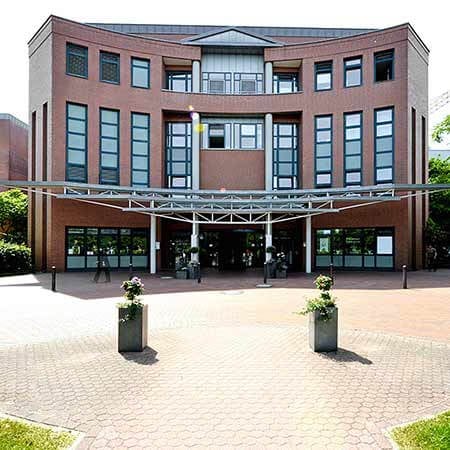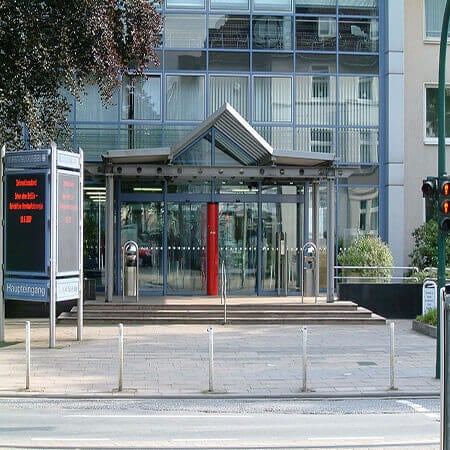Left ventricular aneurysm is a bulging of the heart, which interferes with its function. This area of the myocardium usually contains a large amount of scar tissue. It does not contract at all or its contractility is significantly reduced. Due to impaired blood flow in the coronary vessels, this part of the heart has insufficient blood supply.
According to various authors, the incidence of aneurysm formation after myocardial infarction ranges from 10 to 35%. Myocardial infarction is the most common (95% of cases) cause of this pathology. Within a few days after the death of a portion of the heart muscle, the area of damage becomes thinner, stretched and protrudes – this is how an aneurysm is formed.
It is a severe, prognostically unfavorable, progressive disease. With drug therapy provided, 30-50% of patients die within 5 years. In 50% of cases, the cause of death is severe arrhythmias, in 33% of cases – the progression of heart failure, in 11% of cases – a recurrent coronary event (myocardial infarction or coronary death). The prognosis of the disease is influenced by the patient's age, heart function, the duration and severity of coronary blood flow insufficiency, and the size of the aneurysm.
Content
- Who needs surgery
- Surgical options
- Treatment results
- Why is it worth undergoing treatment abroad
- Treatment in Europe at an affordable price
Who needs surgery
Nowadays, left ventricular aneurysms are much less common in Europe than in the twentieth century. This is due to the fact that the patients who have suffered myocardial infarction receive high-quality treatment. They take medications, and surgeons perform surgical interventions for myocardial revascularization (blood supply restoration). Medical specialists perform thrombolysis or destroy thrombus in the coronary artery immediately after a heart attack using an endovascular procedure, so the degree of damage to the heart muscle is reduced. Nonetheless, left ventricular aneurysms are still common in countries with poorly developed medicine, and they are one of the main causes for the progression of heart failure after myocardial infarction.
The risk of severe left ventricular dysfunction within 5 years after a heart attack is 20%. After its development, the mortality rate of patients within 2 years reaches 50%. To avoid these consequences, timely treatment is required.
It is not always necessary to perform surgery for the restoration of the normal shape of the left ventricle. Doctors perform mitral valve repair surgery and coronary artery bypass grafting to normalize the blood supply to the myocardium. After this intervention, cardiac function improves and patients with ventricular aneurysm suffer less symptoms.
However, the patients with a significant dilatation of the left ventricle require a surgical intervention to remove the aneurysm. It is aimed at eliminating the areas of impaired contractility, namely, areas of myocardial scarring. They are the ones that cause the remodeling (restructuring) of the left ventricle. The purpose of the intervention is to restore the elliptical shape of the heart chamber, restore the physiological diastolic (during heart relaxation) volume and exclude the areas that can become a source of life-threatening arrhythmias.
Aortic aneurysm has the following indications for surgery:
- Anteroseptal myocardial infarction with left ventricular dilatation.
- Severe left ventricular dysfunction with ejection fraction less than 20%.
- Impaired contractility of 35% or more of the perimeter of the left ventricle.
- Severe symptoms of arrhythmia, heart failure, or coronary artery disease.
- Onset of signs of myocardial ischemia when performing provocation tests.
If the patient does not suffer from symptoms and severe heart failure, monitoring becomes the main treatment option. Diagnostic examinations are repeated once every 6 months. With the progression of the decreased left ventricular ejection fraction, the patient needs surgery.
Surgical options
Surgical methods have gradually evolved from linear left ventricular reconstructive surgery to operations in which doctors remove the ischemic area and restore the interventricular septum.
The first successful ventricular reshaping was performed by Wieting in 1912. He performed ventricular ligation in a patient with a congenital aneurysm.
In 1944, Beck described a technique for reinforcing the left ventricle with fascia lata. This technique is called plication. It is still used today, but infrequently – mainly for small aneurysms, without blood clots, and without severe left ventricular dysfunction. Doctors use a teflon patch and sutures from one edge of the aneurysm to the other.
The left ventricular aneurysm was first removed in 1955. The surgical intervention was performed by Likoff and Bailey. It was performed without a heart-lung machine. The authors described 6 such operations.
D.A. Cooley performed linear plastic surgery in 1958. It is used today, but only for large aneurysms without clear boundaries. The surgery was performed under conditions of artificial circulation. The team of specialists also developed two types of septoplasty for patients with damaged interventricular septum: plication with sutures and plastic surgery with a Dacron patch.
In 1973, Cooley surgery was modified by W.S. Stoney. After removing the aneurysm, doctors examine the inner surface of the interventricular septum. They determine where the scar tissue enters the normal myocardium. The outer edge of the removed aneurysm is fixed with sutures to the septum at the junction, and the second row of sutures connects the aneurysm scar with the normal left ventricular myocardium. The technique is called ventriculoplasty (ventricular plastic repair).
In 1979, the approaches to the treatment of left ventricular aneurysm changed dramatically when L. Levinsky performed left ventricular reconstructive surgery using the Dacron patch, and in 1985 A.D. Jatene and V. Dor offered circular left ventricular reconstructive surgery. Doctors reduced the left ventricular cavity and reconstructed the heart chamber with the Dacron patch. Today, four decades later, the most common treatment methods for left ventricular aneurysm in Europe are the Dor and Jatene procedures.
According to the Jatene technique, the left ventricular aneurysm is excised. Then, in the area of transition of the scar into the normal myocardium, a suture is applied. It is pulled together, thus restoring the cavity of the left ventricle. The area of the myocardium formed after excision is closed with the Dacron patch.
According to the Dor procedure, a transaneurysmal ventriculotomy is performed. The intervention implies the resection of the ventricle by making an incision in the area of absence of contractility. The blood clots are removed, and the damaged endocardium is excised. This manipulation is performed in order to prevent ventricular tachycardia. The following stage is the Fontan procedure, the essence of which is the application of a circular suture from the inside of the ventricle along the edge of the removed section of endocardium. A special balloon (sizer) is placed in the left ventricle, which is filled with saline. The suture is tightened, after which the balloon is deflated and removed. The defect formed after the resection is closed with a patch and the remaining tissue of the patient's left ventricle.
In 1989, Cooley described a new, improved technique for left ventricular reconstructive surgery with a patch. The technique is called endoaneurysmorrhaphy. Its essence lies in the fact that the aneurysm is opened parallel to the interventricular groove. After removing the blood clots, doctors implant the elliptical Dacron patch and recreate the normal shape of the left ventricle. The excess ventricular aneurysm sac is removed and the defect is sutured over the patch using teflon or pericardial tissues.
One of the first treatment methods for ventricular aneurysm, namely, linear reconstructive surgery, was improved in 1983. The Mickleborough modification involves excision of the ventricle, removal of blood clots, and placement of drainage through the right pulmonary vein. Although the operation is performed using a heart-lung machine, the heart continues to contract. Therefore, the doctor can distinguish between normal and scarred myocardium with impaired contractile function by palpation. The non-contracting areas of the heart muscle are removed. Under the conditions of a beating heart, it is easier for the doctor to give the myocardium a shape, which is as close to physiological as possible, since the heart muscle does not relax. The defects are closed with sutures and felt pads. If the interventricular septum is damaged, then it is restored with a patch.
One of the very advanced treatment methods is pacopexy. It is also called the SAVE (septal anterior ventricular exclusion). In conditions of artificial circulation, but on a beating heart without clamping the aorta, the doctor dissects the ventricle from the apex of the heart to its base. The sutures are applied along the interventricular septum and on the anterolateral wall of the left ventricle. The patch is implanted along the excluded aneurysm area. The technique allows the doctors to maintain the shape of the ventricle in the form of an ellipse.
Treatment results
In most patients with left ventricular aneurysm, European doctors perform intraventricular circular plastic surgery with simultaneous mitral valve repair or replacement. This type of the surgical intervention gives the maximum advantages for patients with fibrotic aneurysmal sacs with clear boundaries, as well as in the case of lesions of the interventricular septum. Sometimes a single-stage mitral valve intervention cannot be performed.
Linear plastic surgery is used less often. Cooley plastic surgery can be performed for a large left ventricular aneurysm, as well as for aneurysms without clear boundaries.
Here are the mechanisms through which the effect of surgical intervention is achieved:
- Decreased cavity of the left ventricle reduces the load on its wall.
- Decreased myocardial oxygen demand.
- Myocardium functions more efficiently, thereby allowing the heart to pump the same volume of blood, but with less energy.
- Increased contractile activity of muscle fibers.
Studies showed that left ventricular reconstruction improves the whole heart function. Even those parts of the myocardium located far from the aneurysm function better. After the surgical intervention, the reverse development of hypertrophy occurs and the left ventricle takes on a normal shape.
In a short time after the operation, the left ventricular ejection fraction increases, which indicates an improvement in the heart pumping function. The volume of the left ventricle decreases. Its wall gradually becomes thinner. The patient feels improved hemodynamics, namely, relief of the severity of symptoms and increased exercise tolerance. The risk of complications decreases after surgery and life expectancy increases.
Why is it worth undergoing treatment abroad
There are several reasons for patients with left ventricular aneurysm and other cardiovascular diseases to undergo treatment in one of the countries with advanced medicine:
- The use of the very latest surgical techniques.
- The lowest mortality rates.
- The interventions are performed on the beating heart, which allows the doctor to easily distinguish between normal myocardium and scar tissue.
- Successful surgeries are performed even in patients with heart failure and concomitant cardiovascular diseases.
- Surgeons can simultaneously remove the aneurysm, repair heart valves and carry out myocardial revascularization.
- High-quality care and rehabilitation after surgery.
The treatment of cardiovascular diseases abroad is safe and provides patients with good long-term results.
Treatment in Europe at an affordable price
To undergo treatment in one of the European hospitals, you can use the services of the Booking Health specialists. On our website, you can see the cost of treatment in Europe, compare prices and book a medical care program at a favorable price. The treatment in Europe will be easier and faster for you, and the cost of treatment will be significantly lower.
You are welcome to leave your request on the Booking Health website. Our consultant will contact you within 24 hours. The medical tourism operator from the Booking Health company will take care of the organization of your trip for treatment in Europe. We will provide the following benefits for you:
- We will choose a hospital for treatment in Europe, whose doctors specialize in the treatment of left ventricular aneurysm and achieve the best results.
- We will help you overcome the language barrier and establish communication with your attending physician.
- We will reduce the waiting time for the medical care program. You will receive medical services on the most suitable dates.
- We will reduce the price. The cost of treatment in European hospitals will be lower due to the lack of overpricing and additional coefficients for foreign patients.
- We will take care of all organizational issues, such as paperwork, booking a hotel room, transfer from the airport to the hospital. An interpreter will accompany you abroad.
- We will prepare a program and translate medical documents. You do not have to repeat the previously performed diagnostic procedures.
- We will help you keep in touch with the hospital after the completion of treatment in Europe.
- We will organize additional diagnostic examinations and treatment in European hospitals, if required.
- We will buy medicines abroad and forward them to your native country.
The world's leading doctors will take care of your health. The Booking Health specialists will help reduce the cost of treatment, organize your trip, and you will only have to focus on restoring your health.
Authors: Dr. Nadezhda Ivanisova, Dr. Sergey Pashchenko














